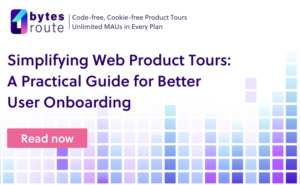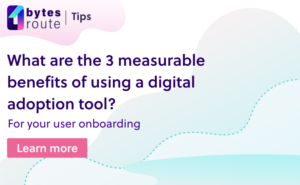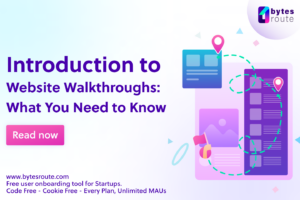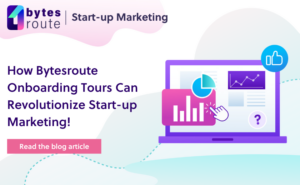With the amount of competition in the online world and the move towards a more digital eCommerce era, the way we connect with customers is mostly virtual. How can you build and nurture relationships with the people who use your products? Make sure you have a customer engagement strategy in place.
In this article, we’ll dive into what customer engagement is and some ways you can successfully achieve and measure it. Let’s go!
What is customer engagement?
Customer engagement refers to the process of communicating with customers through various channels with the purpose of developing a relationship with them. It usually begins with an initial interaction or touch point and continues after the end of the sale to move forward during support.
The goal of customer engagement is to give customers who already like and trust your products and services more value. Customers are first drawn to high-quality products, but relevant content targeted toward improving their tasks or needs can keep them coming back for more. This is accomplished through a marketing method known as customer engagement marketing. We can use various channels to ensure we interact and build customer relationships: social media, email, chats embedded in websites, community forums, and other platforms where they consume content.
Types of customer engagement
Customer engagement is a process that follows the customer step by step at different levels with the purpose of identifying the motivations behind the customer’s decisions.
The data gathered will be used for the most valuable customer journey.
So, you can look at customer engagement in multiple ways.
1. Customer Touchpoint Engagement
Any given point where a customer directly engages with your business, for example, your website.
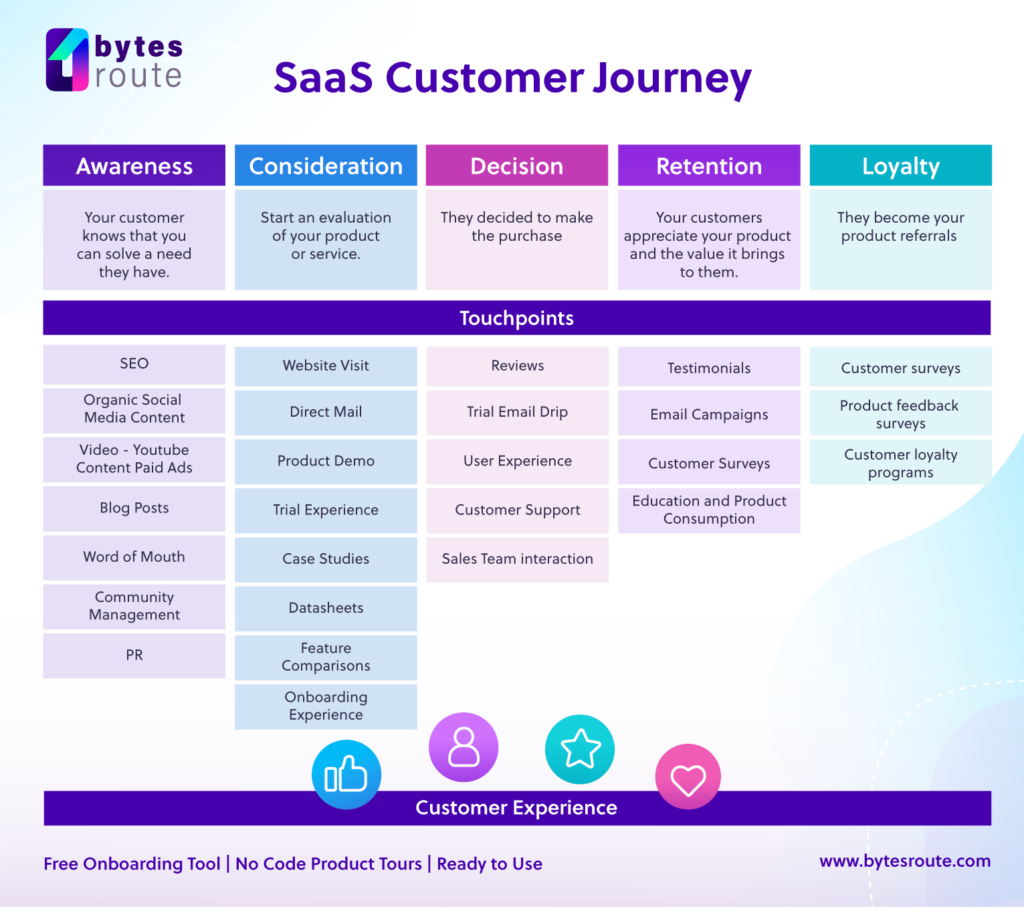
2. Product Engagement
It measures how your users are interacting with your product.
Usually, there are three types of product engagement metrics: breadth, depth, and frequency.
Measuring customer engagement with your product will help you understand which of your customers interact, how active they are, and what drives them to become more active.
It will help you answer some questions like:
- Why aren’t my customers using this new feature?
- Do my customers really know how to use the recently launched feature?
- How many of my customers know about this feature?
Here we can help.
Use a digital onboarding tool like Bytes Route to make sure all of your active users know about your new feature and know how to use it. The magic word is “all”. Why is that? Because you should make sure you serve your onboarding to every customer.
When you use Bytes Route, even in the trial or free edition, you will be able to serve your feature onboarding tours to all your customers since Bytes Route doesn’t count MAUs (monthly active users), assists, web tours, or steps per web tour.
More about the most liberal licensing in the Digital Adoption industry here.
Really, there is no reason not to start your Bytes Route 15-day full-feature trial now!
3. Agent Engagement
It refers to the experience your customers have with customer-facing teams like customer support, sales, and technical support.
4. Brand Engagement
This refers to the attachment between a customer and your brand.
Why is customer engagement important?
A product’s potential for commercial success can be measured by how effectively it interacts with its target audience. It is essential that the product provides a satisfying experience for users and has an easy-to-navigate user interface.
Succeeding in achieving customer engagement is not a simple task. Users have become pickier and more demanding in recent years and have raised their standards for the products they buy. They want to have fun, be involved, and feel confident with the choices they make in their purchases. One strategy for accomplishing this goal is to provide customers with personalized material relevant to their specific requirements or those of customers in general.
The benefits of customer engagement
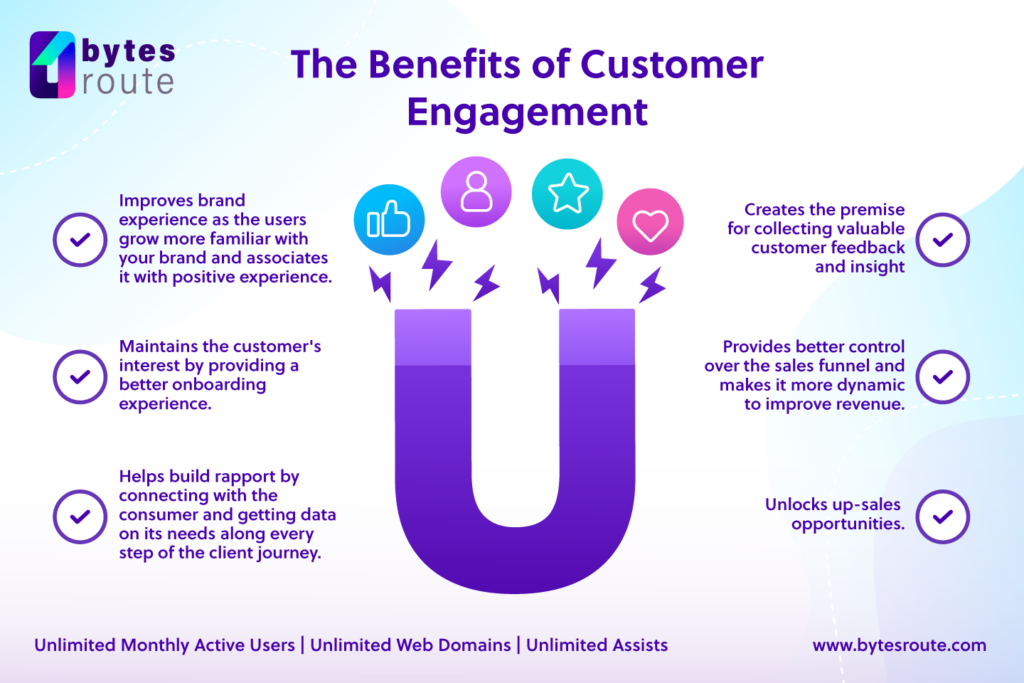
More and better customer interactions will help improve customer relationships, a new challenge of the digital era. The most obvious benefits of customer engagement are:
- Helps build rapport by connecting with the consumer and getting data on its needs along every step of the client journey.
- Maintains the customer’s interest by providing a better onboarding experience.
- Improves brand experience as the users grow more familiar with your brand and associate it with a positive experience.
- Creates the premise for collecting valuable customer feedback and insight.
- Provides better control over the sales funnel and makes it more dynamic to improve revenue.
- Unlocks up-sales opportunities.
How to measure customer engagement
Customer engagement metrics are critical for businesses when providing a great user experience. These indicators assist businesses in expanding and achieving a better customer success rate.
As a critical facilitator in a company’s performance, customer satisfaction can serve as a subliminal promotion method. It can do this by driving leads and converting sales while simultaneously establishing a more extensive client base.
These metrics measure the relationship between marketing strategies and customer reactions. To be in the spotlight, you must keep your clients as engaged as possible. The stronger these relationships are, the more potential clients you will have in your client base. You must gain your clients’ trust, guarantee their happiness, and make them believe in your offerings to keep them coming back to you.
So, to help you measure customer engagement, let’s take a look at a few metrics you can use:
The Net Promoter Score (NPS)
This is a core metric for customer engagement. It is used to evaluate customer experience and analyze and predict business growth.
The calculation of the net promoter score is simple yet highly effective and provides accurate data. You need to ask your users a key question, using a 0-10 scale: “How likely is it that you would recommend [brand] to a friend or colleague?”
You’ll get respondents grouped as:
- Promoters (score 9-10) are enthusiasts with high loyalty who will continue to buy and refer others, which will fuel the company’s growth.
- Passives (score 7-8) are customers who are happy with the service but lack enthusiasm for it, making them susceptible to offerings from competing businesses.
- Detractors are dissatisfied customers who, through negative word-of-mouth, can be detrimental to your brand and slow your company’s growth.
You get the net promoter score (NPS) metric by following the formula:
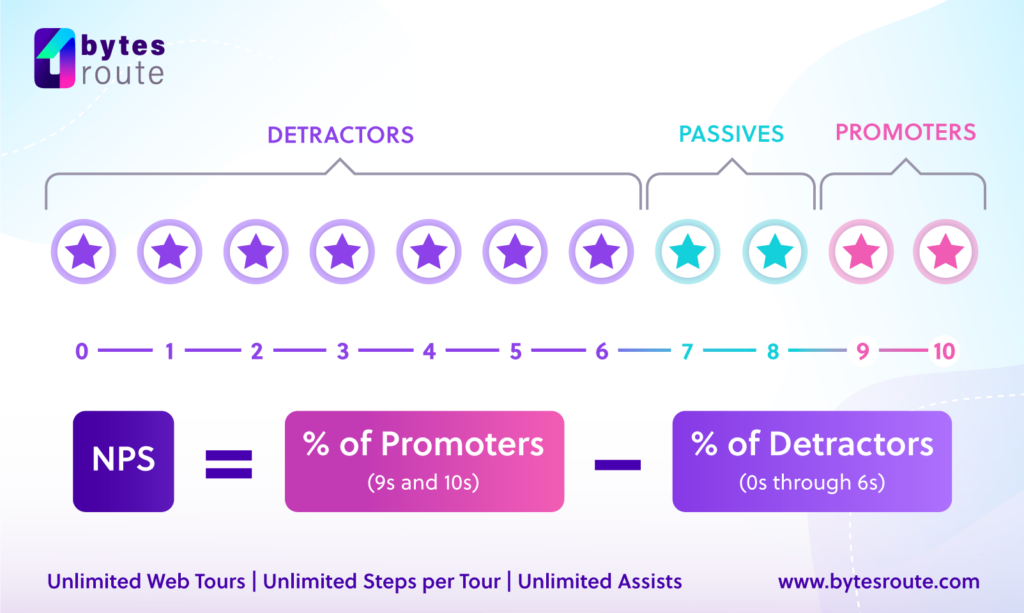
The Customer Acquisition Cost (CAC)
The CAC measures the amount of money a company spends on getting a new customer. It is one of the fundamental metrics used to measure the ROI (return on investment) indicator.
To get the Customer Acquisition Cost (CAC) you need to add all the costs associated with getting a new customer (marketing, advertising, and sales) and divide the sum by the number of customers acquired.
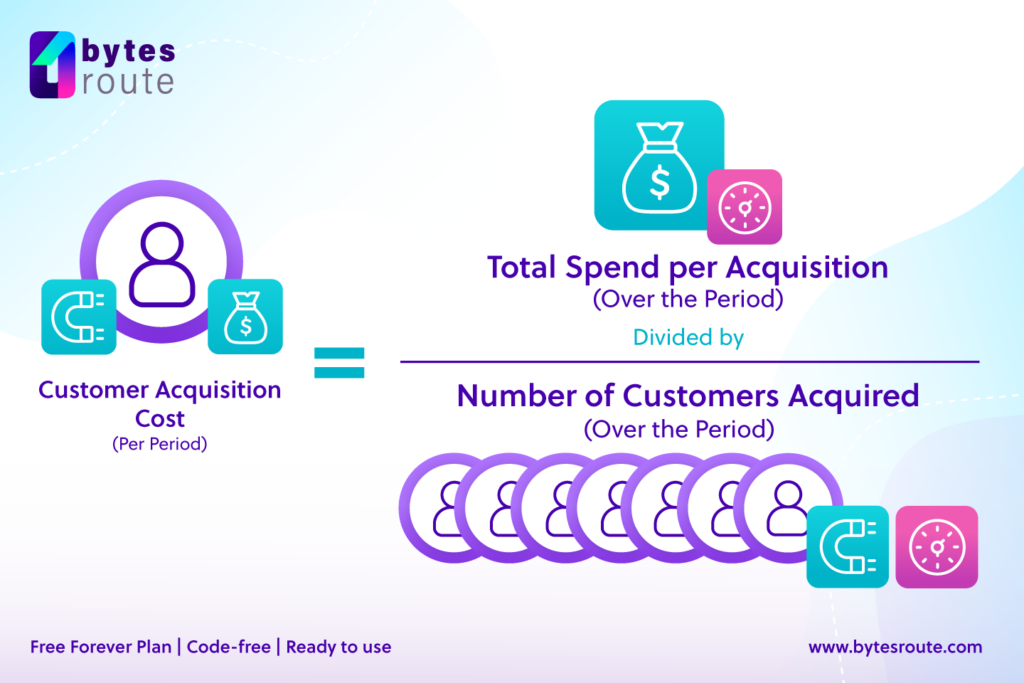
Customer Lifetime Value (CLV)
Customer Lifetime Value (CLV) is a useful metric that estimates how much potential revenue can be attributed to a customer. It figures out these estimates by looking at how much a customer has spent in the past, is spending now, and is expected to spend in the future.
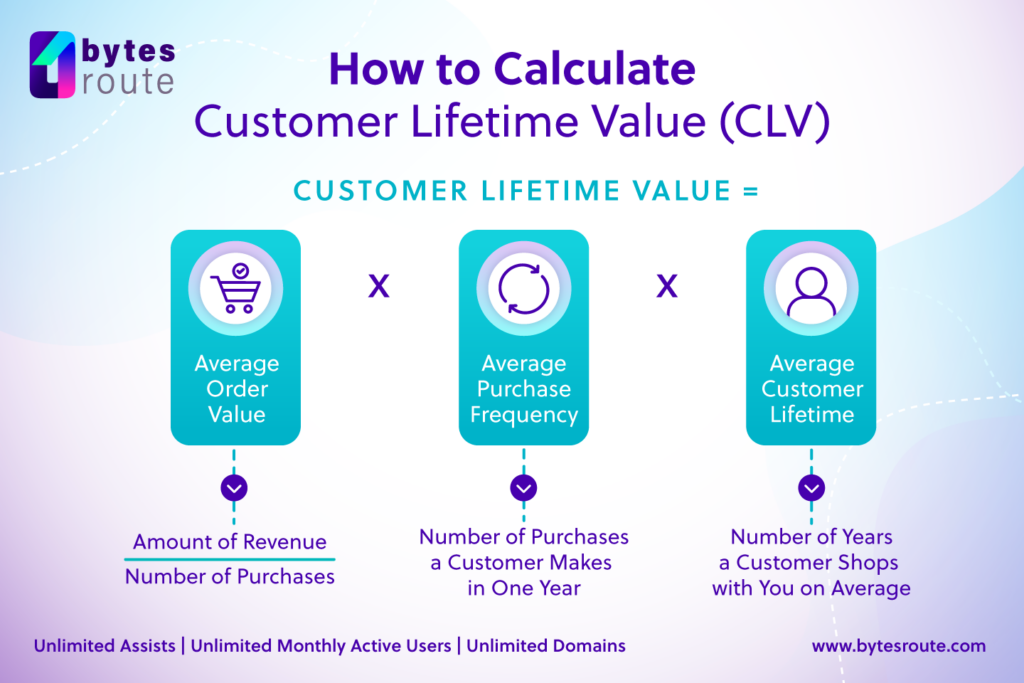
Customer Churn Rate
Customer churn, sometimes known as the attrition rate, measures the rate at which the company is losing customers in a given period of time.
For the Saas licensing, the churn rate measures the percentage of the users that chose to not renew the subscription. The higher your churn rate, the more clients and users you lose.
Follow this formula to get your churn rate:
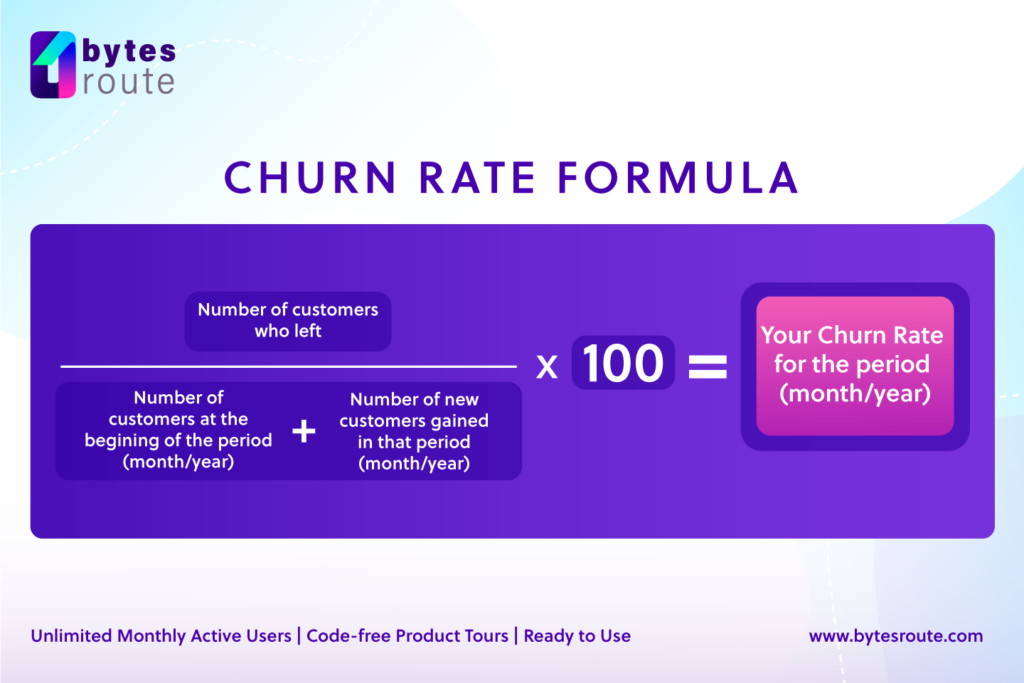
Especially in the Saas business, customer churn is unavoidable. In the subscription-based industry, there is a max 5% churn rate set as “acceptable”. Everything that is above this figure needs investigation.
Customer Satisfaction Score (CSAT)
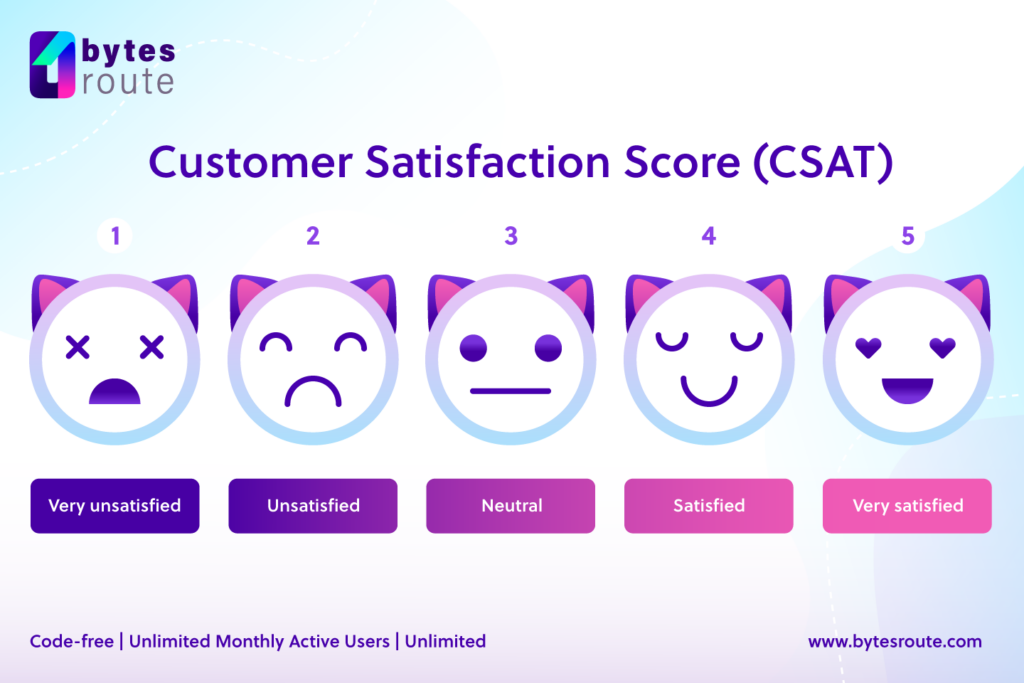
Customer Satisfaction Score (CSAT) is one of the most commonly used metrics when evaluating business performance and gives information on how customers feel in terms of service or product quality.
To calculate CSAT, you need to take into consideration only the satisfied (4) and very satisfied (5) responses since it seems that this is the most accurate way to predict customer retention.
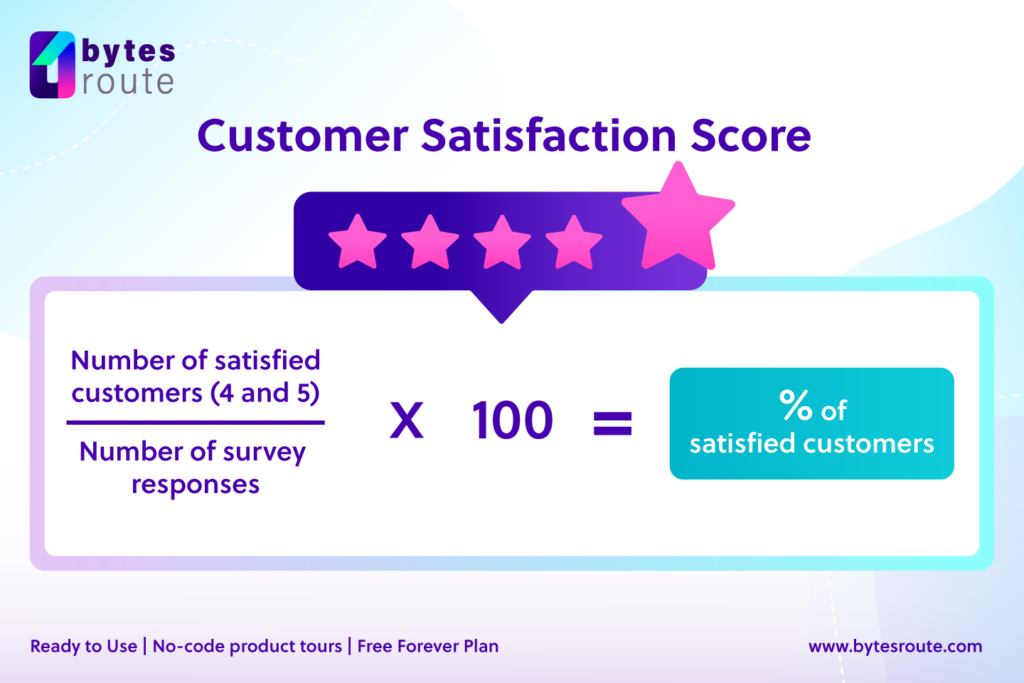
The main difference between the Net Promoter Score (NPS) and the Customer Satisfaction Score (CSAT) is that NPS measures loyalty to the brand and CSAT measures satisfaction with your product or service.
Customer Effort Score (CES)
If you need to know how much effort it takes for a given customer to get an issue resolved, an order fulfilled, or an item returned, you need to measure your Customer Effort Score (CES).
In short, the Customer Effort Score (CES) measures how much effort a customer puts into interacting with your business. It is used to evaluate how easy it is for a customer to do business with you through a simple survey.
Since the data it provides might be influenced by a recent (bad) experience, it needs to be used together with the Net Promoter Score (NPS) to be relevant.
The best time to take the survey is immediately after the interaction of interest, like after closing the interaction with customer service or just purchasing the product.
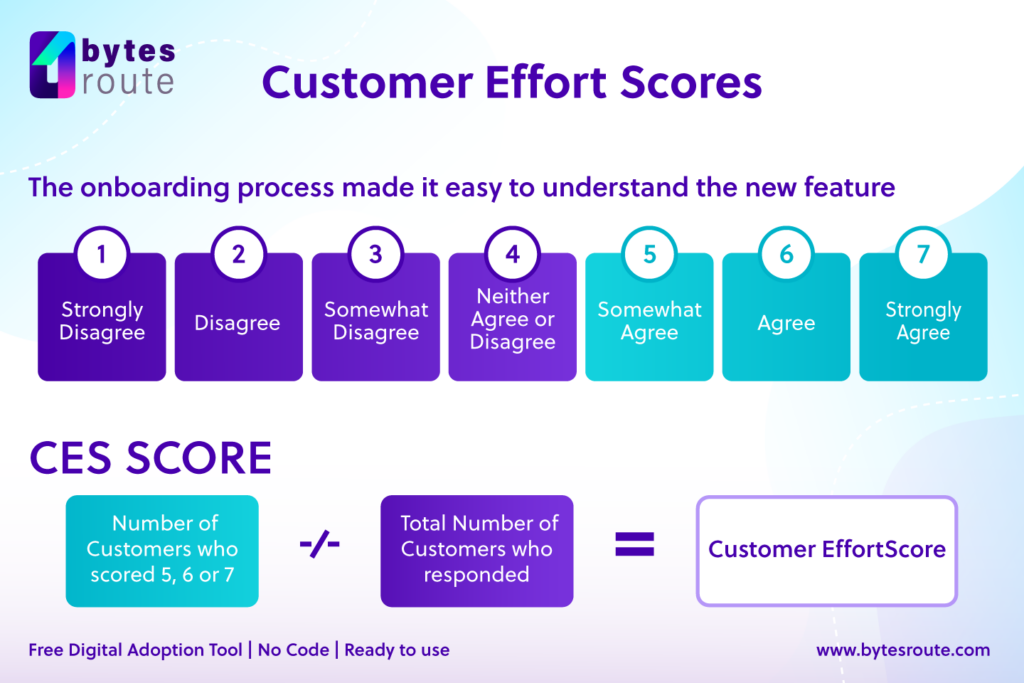
User Behavior Metrics
You can use the Google Analytics tool to get some very insightful insights on your users’ behavior in a given period of time:
- User Actions. You can measure the actions customers take on your website, such as the time spent on a specific site, clicking, or viewing links. You can track online behavior easily.
- Session time. Activity time measures the time spent on your site by your customers. The better your content is, the more you will retain engaged customers.
- Page visit frequency. This metric gauges the traffic on your website. Your page’s level of engagement can be calculated by tracking the number of customers who visit it and how long they stay on it.\
Feature Usage
Feature usage follows users’ behavior in relation to one single feature versus the overall product.
You can use the events in Google Analytics to determine how frequently a feature is used as well as the number of times it has been used once by using unique events.
How do you measure feature usage?
To measure the adoption and consumption of a particular feature, you can take into consideration metrics like:
- Total number of users of the feature
- Percentage of feature users out of the total number of product users
- Number of unique feature users over a set time frame (daily, weekly, or monthly)
- Average feature usage per user during a time frame
- The average time elapsed between feature usages per user. Especially before and after you implement and publish a feature onboarding tour.
- What is the previous path page of the feature user, which will give a better understanding of the context of your user before reaching the feature?
But first, you need to define what it means for your product that a feature is used. And how to make sure that your users know how to use it.
Customer engagement (CE) vs. customer experience (CX)
When we talk about “customer experience,” we’re talking about the customer’s perspective. In other words, it reflects how they feel about the brand as a whole.
On the other hand, “customer engagement” relates to the company’s point of view.
A company can connect and interact with customers in a variety of ways to establish relationships, influence the path to purchase, and increase revenues.
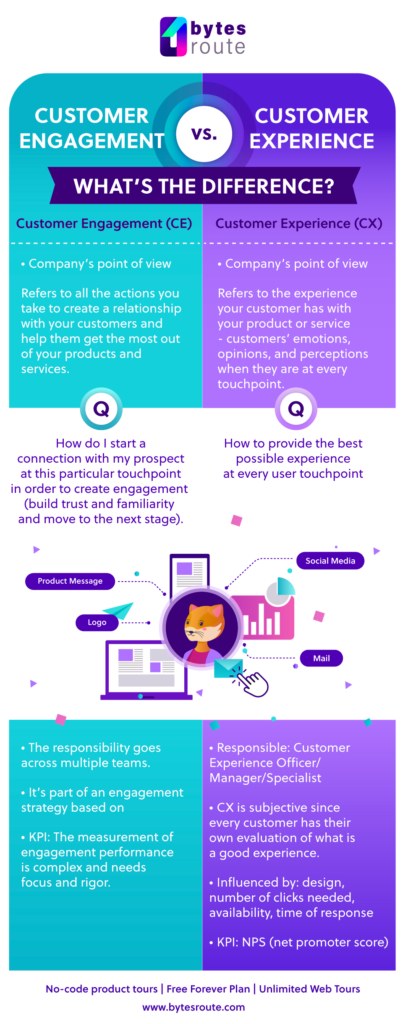
Customer engagement strategies
A customer engagement strategy streamlines interactions and activities to produce the best possible customer experience before and after the purchase. To establish a connection with your customers, increase their level of satisfaction, and cultivate brand loyalty, you must use a variety of communication methods. An effective strategy is measurable and sensitive to client needs, allowing you to collect feedback, input, and relevant consumer performance data to adjust your strategy.
How to create a customer engagement strategy::
- Define and validate your Customer Journey
- Implement a product feedback process
- Communicate new features and updates
- Include Social Media content and distribution executed for a sustained period of time
- Develop a loyalty program – offer high-value resources to your loyal customers for free
- Have in place a product onboarding policy
- Offer personalized customer experience
- Use digitalization and automation
- Focus on the quality of the content you provide
- VIP Customer Evangelists Program
Customer engagement tools
The goal of customer engagement tools is finding the best tools to assist you in better interacting with your customers.
Finding the best tools to assist you in better interacting with your customers is the goal of customer engagement tools.
Interacting with clients has always been crucial in business, but with the amount of competition and possibilities, it is way more important now.
When a customer stepped into a shop 50 years ago, the shopkeeper understood the importance of customer engagement, but once the customer left, the interaction was done. We couldn’t previously interact with people in their homes or on their devices as they went about their daily lives.
Customers are now more accessible than they have ever been. This implies that businesses should be equally accessible.
Chatbots
Chatbots are getting better by the minute. There has never been a better time to put money into your chatbot technology.
What’s so important about a chatbot?
The process is often slow when you have a problem and call a company. You might have to wait a few minutes or even longer to talk to a real person. Even when you talk to an agent, the process can be slow. Sometimes, agents have to talk to more than one customer at once. Other times, the agent doesn’t know the answer right away and has to look through many CRM systems or knowledge bases to find it. The agent can only do so much because of what they know and how quickly they can find the right information.
A chatbot is not limited in these ways. A chatbot can answer a customer’s question right away. They can search for the right information to give back to the customer by using the context of the conversion and keywords. One of the best things about chatbots is that they are always available. This means that you are always available to your customers and can help them with their problems, no matter the time of day.
Surveys
There are numerous survey-generating tools available. SurveyMonkey is one of the most well-known.
When it comes to how they aid in customer engagement, it all boils down to getting to know your customers better. You can utilize surveys to get crucial facts about your consumer base and use this information to determine who your target customers are. You can also use them to learn what your company does effectively and what it does poorly.
Customer Churn Tools
Tracking your customer churn might assist you in determining what is causing your customers to leave. This process is data-driven. The objective is to search for patterns in the data. Do the majority of your consumers leave at a given time of year? Is this due to a seasonal product, or is it something more ambiguous? Do you lose a lot of clients when your competitors run special promotions and discounts on their products? Is there a more apparent downward trend? If there is, it may indicate that your product is no longer helpful to clients because better alternatives exist or the world has surpassed it.
Listening Tools
Don’t forget to monitor how people are talking about your company. This includes tracking any time your organization is mentioned on social media or in other content, not just reviews on Google or other trusted sites. Some people prefer to share their experiences with their friends or followers on social media rather than write a review. Every time they do this, you learn more about how your brand is seen by customers. You also learn how to interact with your consumers because they usually tell you exactly what they want.
In-app Communications
In-app messaging can be an excellent method to communicate with your consumers and give them relevant content. The goal here is to be timely and relevant. You should not disrupt your customer’s experience or bombard them with irrelevant advertisements. If they look stuck, you can urge them to buy products they’ve expressed interest in, remind them of the items in their cart, or email their helpful articles.
Emails
Even in 2022, emails can be an effective engagement tool. The secret to good email engagement is only to send your consumers relevant material. This implies that the content must be tailored and include a call to action that will be effective if the customer is already interested in your goods. People despise generic emails and will wind up in the spam bin faster than you can send the next one.
Digital Adoption Platforms
A Digital Adoption Platform (DAP) is a software platform that simplifies the user experience and ensures competency on any software platform, website, or app to allow smooth software learning.
Digital adoption platform software is built on top of other software products, apps, or websites and aids in accelerating proficiency by guiding users through essential tasks and offering interpretive and evaluative information as they traverse a product.
Bytes Route is a digital onboarding platform for SaaS products, websites, and web applications dedicated to non-technical users, and you get
► unlimited web domains to connect and use
► unlimited guided tours for a given domain
► unlimited steps defined per tour
► unlimited assists/tour sessions
► unlimited active users for your published tours
Bytes Route offers a 15-day full-feature trial, but a forever free version is available!
Conclusion
We hope this article gave you a deeper perspective on customer engagement and how to get started with improving the way you connect and build relationships with your customers.
